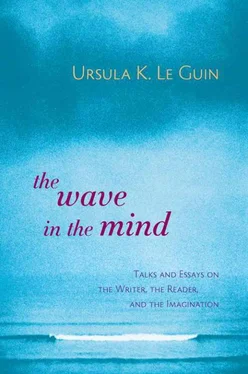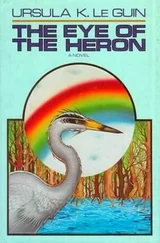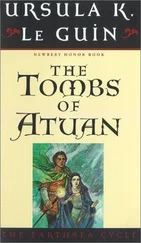I was working from my impression that a dark event in the story was likely to be followed by a brighter one (or vice versa); that when the characters had exerted terrible effort, they then got to have a rest; that each action brought a reaction, never predictable in nature, because Tolkien’s imagination is inexhaustible, but more or less predictable in kind, like day following night, and winter after fall.
This “trochaic” alternation of stress and relief is of course a basic device of narrative, from folktales to War and Peace; but Tolkien’s reliance on it is striking. It is one of the things that make his narrative technique unusual for the mid–twentieth century. Unrelieved psychological or emotional stress or tension, and a narrative pace racing without a break from start to climax, characterise much of the fiction of the time. To readers with such expectations, Tolkien’s plodding stress/relief pattern seemed and seems simplistic, primitive. To others it may seem a remarkably simple, subtle technique of keeping the reader going on a long and ceaselessly rewarding journey.
I wanted to see if I could locate the devices by which Tolkien establishes this master rhythm in the Trilogy; but the idea of working with the whole immense saga was terrifying. Perhaps some day I or a braver reader can identify the larger patterns of repetition and alternation throughout the narrative. I narrowed my scope to one chapter, the eighth of volume 1, “Fog on the Barrow Downs”: some fourteen pages, chosen almost arbitrarily, though I did want a selection with some traveling in it, journey being such a large component of the story. I went through the chapter noting every major image, event, and feeling-tone and particularly noting recurrences or strong similarity of words, phrases, scenes, actions, feelings, and images. Very soon, sooner than I expected, repetitions began to emerge, including a positive/negative binary pattern of alternation or reversal.
These are the chief recurrent elements I listed (page references are to the George Allen & Unwin edition of 1954):
• A vision or vista of a great expanse (three times: in the first paragraph; in the fifth paragraph; and on page 157, when the vision is temporal—back into history)
• The image of a single figure silhouetted against the sky (four times: Goldberry, page 147; the standing stone, page 148; the barrow-wight, page 151; Tom, pages 153 and 154. Tom and Goldberry are bright figures in sunlight, the stone and the wraith are dark looming figures in mist)
• Mention of the compass directions—frequent, and often with a benign or malign connotation
• The question “Where are you?” three times (page 150, when Frodo loses his companions, calls, and is not answered; page 151, when the barrow-wight answers him; and Merry, on page 154, “Where did you get to, Frodo?” answered by Frodo’s “I thought that I was lost” and Tom’s “You’ve found yourself again, out of the deep water”)
• Phrases describing the hill country through which they ride and walk, the scent of turf, the quality of the light, the ups and downs, and the hilltops on which they pause: some benign, some malign
• Associated images of haze, fog, dimness, silence, confusion, unconsciousness, paralysis (foreshadowed on page 148 on the hill of the standing stone, intensified on page 149 as they go on, and climaxing on page 150 on the barrow), which reverse to images of sunlight, clarity, resolution, thought, action (pages 151–153)
What I call reversal is a pulsation back and forth between polarities of feeling, mood, image, emotion, action—examples of the stress/release pulse that I think is fundamental to the structure of the book. I listed some of these binaries or polarities, putting the negative before the positive, though that is not by any means always the order of occurrence. Each such reversal or pulsation occurs more than once in the chapter, some three or four times.
darkness/daylight
resting/traveling on
vagueness/vividness of perception
confusion of thought/clarity
sense of menace/of ease
imprisonment or a trap/freedom
enclosure/openness
fear/courage
paralysis/action
panic/thoughtfulness
forgetting/remembering
solitude/companionship
horror/euphoria
cold/warmth
These reversals are not simple binary flips. The positive causes or grows from the negative state, and the negative from the positive. Each yang contains its yin, each yin contains its yang. (I don’t use the Chinese terms lightly; I believe they fit with Tolkien’s conception of how the world works.)
Directionality is extremely important all though the book. I believe there is no moment when we don’t know, literally, where north is, and what direction the protagonists are going. Two of the wind rose points have a pretty clear and consistent emotional value: east has bad connotations, west is benign. North and south vary more, depending on where we are in time and space; in general I think north is a melancholy direction and south a dangerous one. In a passage early in the chapter, one of the three great “vistas” offers us the whole compass view, point by point: west, the Old Forest and the invisible, beloved Shire; south, the Brandywine River flowing “away out of the knowledge of the hobbits”; north, a “featureless and shadowy distance”; and east, “a guess of blue and a remote white glimmer… the high and distant mountains”—where their dangerous road will lead them.
The additional points of the Native American and the airplane compass—up and down—are equally firmly established. Their connotations are complex. Up is usually a bit more fortunate than down, hilltops better than valleys; but the Barrow Downs—hills—are themselves an unlucky place to be. The hilltop where they sleep under the standing stone is a bad place, but there is a hollow on it, as if to contain the badness. Under the barrow is the worst place of all, but Frodo gets there by climbing up a hill. As they wind their way downward, and northward, at the end of the chapter, they are relieved to be leaving the uplands; but they are going back to the danger of the Road.
Similarly, the repeated image of a figure silhouetted against the sky—above seen from below—may be benevolent or menacing.
As the narrative intensifies and concentrates, the number of characters dwindles abruptly to one. Frodo, afoot, goes on ahead of the others, seeing what he thinks is the way out of the Barrow Downs. His experience is increasingly illusory—two standing stones like “the pillars of a headless door,” which he has not seen before (and will not see when he looks for them later)—a quickly gathering dark mist, voices calling his name (from the eastward), a hill which he must climb “up and up,” having (ominously) lost all sense of direction. At the top, “It was wholly dark. ‘Where are you?’ he cried out miserably.” This cry is unanswered.
When he sees the great barrow loom above him, he repeats the question, “angry and afraid”—“‘Where are you?’” And this time he is answered, by a deep, cold voice out of the ground.
The key action of the chapter, inside the barrow, involves Frodo alone in extreme distress, horror, cold, confusion, and paralysis of body and will—pure nightmare. The process of reversal—of escape—is not simple or direct. Frodo goes through several steps or stages in undoing the evil spell.
Lying paralysed in a tomb on cold stone in darkness, he remembers the Shire, Bilbo, his life. Memory is the first key. He thinks he has come to a terrible end, but refuses to accept it. He lies “thinking and getting a hold on himself,” and as he does so, light begins to shine.
But what it shows him is horrible: his friends lying as if dead, and “across their three necks lay one long naked sword.”
Читать дальше



